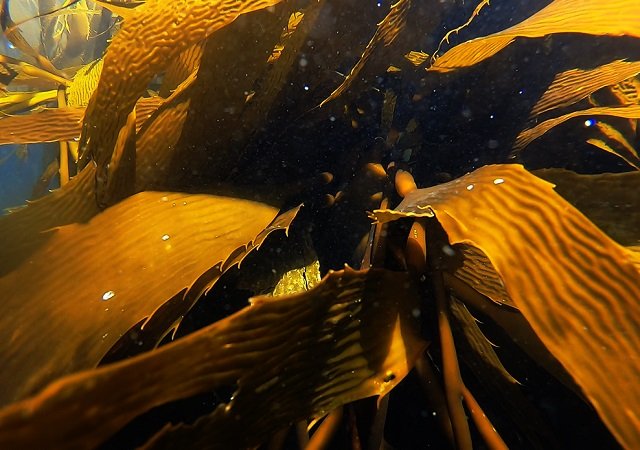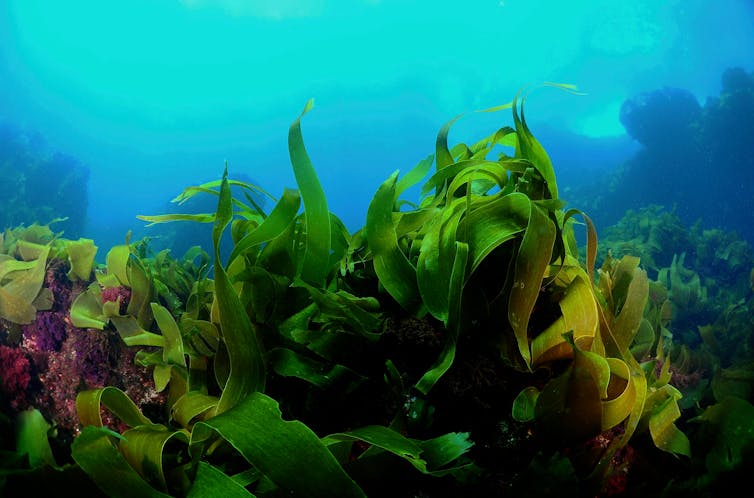
Brown algae, scientifically known as Phaeophyceae, are a vital component of coastal ecosystems, forming extensive underwater forests that provide crucial ecosystem services. However, these ecosystems are threatened by climate change, highlighting the need for a deeper understanding of the biology and evolutionary history of brown algae.
A new study published in Cell by an international team of scientists from Université Evry, Station Biologique de Roscoff, Hokkaido University, Núcleo Milenio MASH at Universidad Austral de Chile, and other academic institutions delves into the genetic map of brown algae. The study reveals the secrets of their evolutionary success, paving the way for future conservation efforts.
From Humble Beginnings to Evolutionary Powerhouse
Imagine a time 450 million years ago. Brown algae emerged from a group of photosynthetic organisms, inheriting traits from red algae through a complex process known as secondary endosymbiosis. This remarkable event set the stage for a surge in genetic innovation. Scientists analyzed the genomes of several brown algae species, uncovering a fascinating history. The lineage of brown algae witnessed:
- An Explosion of New Genes: The emergence of brown algae involved the creation of entirely new gene families, providing the building blocks for novel functions.
- Protein Transformation: The organization of genetic instructions within proteins (protein domains) underwent significant rearrangements, enabling proteins to perform new tasks.
- Borrowing from Neighbors: Horizontal gene transfer, the exchange of genetic material between unrelated organisms, played a role in shaping the brown algae genome.
- Acquisition of Special Abilities: Key metabolic pathways were established, including alginate production, the basis of their flexible cell walls, and the synthesis of halogenated compounds and phlorotannins, potentially used for defense and other functions.
Genomics Meets Phenotype: Unveiling the Link Between Genes and Traits
The study goes beyond genes. Researchers found strong connections between genomic changes and the evolution of physical traits. These links include:
- Life Cycle Strategies: The diverse life cycles observed in brown algae, ranging from simple to complex, likely arose from genetic modifications.
- Flagella Shape and Function: The structure of flagella, hair-like structures used for movement, appears influenced by the genetic composition of different species.
The study also revealed that integrating large viral genomes into brown algae DNA significantly shaped their genetic composition over evolutionary time. This unexpected discovery raises further questions about the intricate dance between viruses and their hosts.
Dr. Sylvain Faugeron, co-director of MASH and one of the study’s authors, highlighted the findings’ relevance, stating that the research “documented the fundamental role of microorganisms such as bacteria and viruses in genome evolution and the acquisition of new functions, particularly evidencing the presence of extensive segments of viral genomes from the Phaeovirus group, viruses specialized in infecting brown algae.”
He added that the study revealed “an intense period of genomic evolution during the early steps of brown algae development, a group of organisms belonging to a lineage distant from plants, animals, and fungi, which independently evolved complex multicellular forms such as giant kelp, known in Chile as ‘huiros’.”
Innovations in Multicellularity
Evolutionary innovations enabling complex multicellular organisms include:
Stay Always Informed
Join our communities to instantly receive the most important news, reports, and analysis from the aquaculture industry.
- Defense Mechanisms Against Herbivores and Pathogens: Based on iodine and bromine metabolism, forming an immune-like system.
- Cell Communication Mechanisms: Supported by genes absent in animals and plants, offering new models for studying cellular interactions.
Implications for Conservation
The findings have significant implications for conserving brown algae ecosystems. As these ecosystems face climate change threats, developing sustainable, low-impact approaches to producing food, bioactive compounds, and biomass through seaweed mariculture is essential. Filling gaps in our knowledge of brown algae biology and evolutionary history can improve conservation and management strategies.
Conclusion
The study provides a comprehensive understanding of brown algae’s evolutionary history, highlighting key genomic traits contributing to their success. Exploring the biology and evolutionary history of these organisms deepens our appreciation of their importance in coastal ecosystems and informs effective conservation strategies to mitigate climate change impacts.
Finally, Núcleo Milenio MASH Director Dr. Carolina Camus emphasized that this type of work “not only expands our understanding of marine biodiversity but also demonstrates how international and interdisciplinary collaboration is essential to tackling the most complex challenges in marine biology and specifically in algae. The active participation of Núcleo Milenio MASH in this project reflects our commitment to high-quality scientific research and to strengthening science in Chile, positioning us as a global reference in the study of algae and their ecological and aquacultural importance.”
Reference (open access)
Denoeud, F., Godfroy, O., Cruaud, C., Heesch, S., Nehr, Z., Tadrent, N., … & Cock, J. M. (2024). Evolutionary genomics of the emergence of brown algae as key components of coastal ecosystems. Cell. Volume 187, Issue 24p6943-6965.e39.
Editor at the digital magazine AquaHoy. He holds a degree in Aquaculture Biology from the National University of Santa (UNS) and a Master’s degree in Science and Innovation Management from the Polytechnic University of Valencia, with postgraduate diplomas in Business Innovation and Innovation Management. He possesses extensive experience in the aquaculture and fisheries sector, having led the Fisheries Innovation Unit of the National Program for Innovation in Fisheries and Aquaculture (PNIPA). He has served as a senior consultant in technology watch, an innovation project formulator and advisor, and a lecturer at UNS. He is a member of the Peruvian College of Biologists and was recognized by the World Aquaculture Society (WAS) in 2016 for his contribution to aquaculture.




